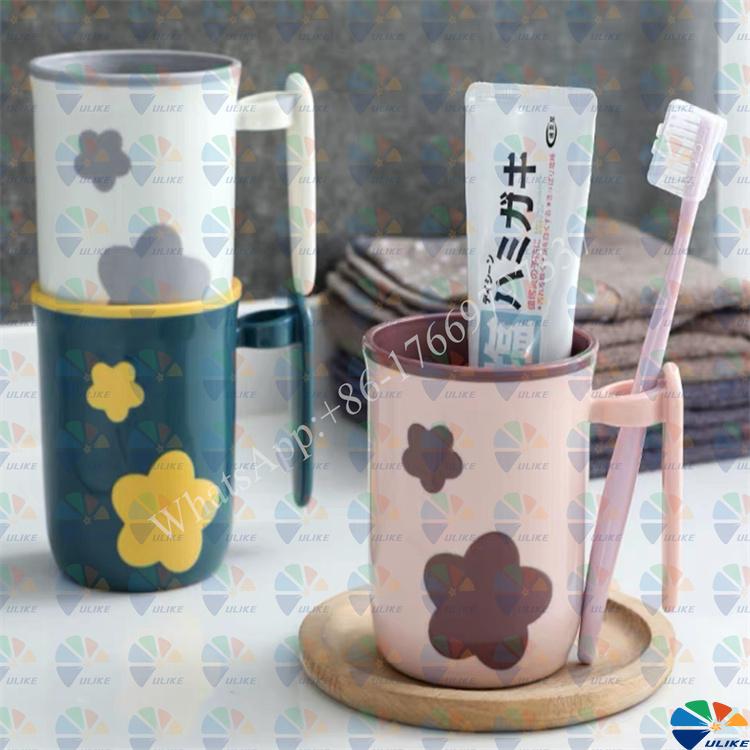Introduction to plastic thermal transfer
Introduction to plastic thermal transfer
1 Plastic thermal transfer process
The thermal transfer process is suitable for hot stamping on the flat, curved, special-shaped, cylindrical and conical surfaces of plastics (ABS, AS, PS, PVC, EVA, PP, PE, PET, TPR, PU, acrylic), metals, leather, wood, and other products. Among them, the most common is plastic thermal transfer.
Plastic thermal transfer is widely used in products in industries such as daily necessities, cosmetics, stationery, toys, electrical appliances, building materials, decorative materials, gifts, food packaging, signs, and packaging printing and decoration.
So, for different materials, is the selection of thermal transfer film and the control of transfer temperature and pressure the same for plastic thermal transfer?
The answer is definitely different.
2
Plastic thermal transfer of different materials
Because plastic thermal transfer of different materials is different in rigidity, shrinkage, heat resistance, chemical stability, etc.
1.
PVC and EVA plastic heat transfer
In terms of heat resistance, PVC and EVA materials are the worst, so when doing heat transfer, you should choose a heat transfer film that can be hot-stamped at low temperature, and the temperature should be controlled at 140°C-160°C for the best.
2. ABS/PS/acrylic plastic heat transfer
ABS/PS/acrylic materials have relatively stable chemical properties, can have a good combination with the ink on the transfer film, and have a relatively good shrinkage rate, so you also need to pay attention to the pressure of the heat transfer machine when hot-stamping. For such products, the hot-stamping temperature is generally 180°C-200°C for the best, and the pressure is controlled at 0.5Kpa/s.
3.
PP plastic heat transfer
PP has a higher surface strength, so when we do heat transfer, compared with ABS, the pressure should be greater and the temperature should be higher. The temperature is generally controlled at 210-220 degrees for the best.
4.
PE plastic thermal transfer
PE material is softer, has lower density, poor surface adhesion, but good toughness, so among all plastic thermal transfers, the hot stamping temperature is the highest, generally controlled at 240-260 degrees, and the glue layer of the transfer film must be thick.
In summary, when doing plastic thermal transfer, the thermal transfer film, transfer temperature, pressure control, etc. used are different for plastics of different materials.
![af]() Afrikaans
Afrikaans![sq]() Albanian
Albanian![am]() Amharic
Amharic![ar]() Arabic
Arabic![fr]() French
French![es]() Spanish
Spanish![ru]() Russian
Russian![de]() German
German![hy]() Armenian
Armenian![it]() Italian
Italian![ja]() Japanese
Japanese![ko]() Korean
Korean![pt]() Portuguese
Portuguese![hi]() Hindi
Hindi![az]() Azerbaijani
Azerbaijani![ro]() Romanian
Romanian![pl]() Polish
Polish![th]() Thai
Thai![el]() Greek
Greek![eu]() Basque
Basque![en]() English
English![zh-CN]() Chinese (Simplified)
Chinese (Simplified)![zh-TW]() Chinese (Traditional)
Chinese (Traditional)![be]() Belarusian
Belarusian![bn]() Bengali
Bengali![bs]() Bosnian
Bosnian![bg]() Bulgarian
Bulgarian![ca]() Catalan
Catalan![ceb]() Cebuano
Cebuano![ny]() Chichewa
Chichewa![co]() Corsican
Corsican![hr]() Croatian
Croatian![cs]() Czech
Czech![da]() Danish
Danish![nl]() Dutch
Dutch![eo]() Esperanto
Esperanto![et]() Estonian
Estonian![tl]() Filipino
Filipino![fi]() Finnish
Finnish![fy]() Frisian
Frisian![gl]() Galician
Galician![ka]() Georgian
Georgian![gu]() Gujarati
Gujarati![ht]() Haitian Creole
Haitian Creole![ha]() Hausa
Hausa![haw]() Hawaiian
Hawaiian![iw]() Hebrew
Hebrew![hmn]() Hmong
Hmong![hu]() Hungarian
Hungarian![is]() Icelandic
Icelandic![ig]() Igbo
Igbo![id]() Indonesian
Indonesian![ga]() Irish
Irish![jw]() Javanese
Javanese![kn]() Kannada
Kannada![kk]() Kazakh
Kazakh![km]() Khmer
Khmer![ku]() Kurdish (Kurmanji)
Kurdish (Kurmanji)![ky]() Kyrgyz
Kyrgyz![lo]() Lao
Lao![la]() Latin
Latin![lv]() Latvian
Latvian![lt]() Lithuanian
Lithuanian![lb]() Luxembourgish
Luxembourgish![mk]() Macedonian
Macedonian![mg]() Malagasy
Malagasy![ms]() Malay
Malay![ml]() Malayalam
Malayalam![mt]() Maltese
Maltese![mi]() Maori
Maori![mr]() Marathi
Marathi![mn]() Mongolian
Mongolian![my]() Myanmar (Burmese)
Myanmar (Burmese)![ne]() Nepali
Nepali![no]() Norwegian
Norwegian![ps]() Pashto
Pashto![fa]() Persian
Persian![pa]() Punjabi
Punjabi![sm]() Samoan
Samoan![gd]() Scottish Gaelic
Scottish Gaelic![sr]() Serbian
Serbian![st]() Sesotho
Sesotho![sn]() Shona
Shona![sd]() Sindhi
Sindhi![si]() Sinhala
Sinhala![sk]() Slovak
Slovak![sl]() Slovenian
Slovenian![so]() Somali
Somali![su]() Sudanese
Sudanese![sw]() Swahili
Swahili![sv]() Swedish
Swedish![tg]() Tajik
Tajik![ta]() Tamil
Tamil![te]() Telugu
Telugu![tr]() Turkish
Turkish![uk]() Ukrainian
Ukrainian![ur]() Urdu
Urdu![uz]() Uzbek
Uzbek![vi]() Vietnamese
Vietnamese![cy]() Welsh
Welsh![xh]() Xhosa
Xhosa![yi]() Yiddish
Yiddish![yo]() Yoruba
Yoruba![zu]() Zulu
Zulu


